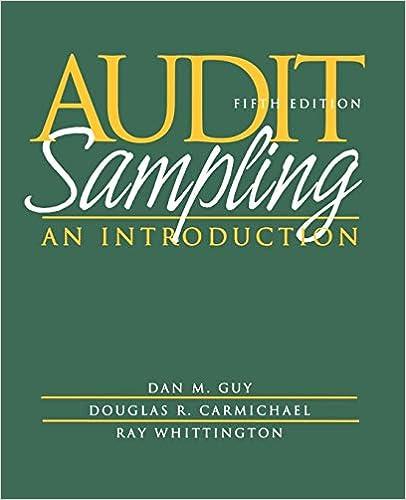Question
1. Which of the following is not a source of a company's financing a. Liabilities b. Stockholders' Equity c. Off-balance-sheet transactions d. All of them
1. Which of the following is not a source of a company's financing a. Liabilities b. Stockholders' Equity c. Off-balance-sheet transactions d. All of them are sources of financing 2. Which of the following is an example of a financing liability a. Leases b. Accounts payable c. Postretirement liabilities d Taxes payable 3. Which of the following is correct about liabilities and equity a. Debtholders receive payments before equity holders at times of a company's liquidity b. All equity holders have voting rights c. All equity holders have the same seniority d. Debtholders are exposed to maximum risk and return 4. Which of the following reduces shareholders' equity? a. paid-in capital b. Retained earnings c. Treasury stock d. common stock 5. Which of the following will NOT change retained earnings? a. Net income b. Cash or stock dividends c. Prior period adjustment d All of the above may change retained earnings
6. Which of the following is not a correct statement of the lease capitalization criteria? a. lease transfers ownership of property to lessee by end of the lease term b. lease contains an option to purchase the property at a bargain price c. lease term is 75% or more of estimated economic life of the property d Rentals and other minimum lease payments at beginning of lease term is 90% or more of the fair value of leased property 7. Under which type of lease, the total lease payment is considered to be an expense a. capital lease b. operating lease 8. If a company was concerned about having to much debt related to equity, which of the following would reflect less debt on the companys books? a. operating lease b. capital lease 9. Which of the following is correct about a capital lease? a. a company must record an asset and a related liability associated with the leased property. b. The present value the stream of lease payments is used to capture the lease liability c. The lessee needs to record annual depreciation d. All of the above are correct 10. Which of the following is an example of a transaction sometimes used as off-balance-sheet financing? a. Product financing arrangements, where a company sells and agrees to either repurchase inventory or guarantee a selling price b. Sell receivables with recourse and record them as sales rather than liabilities c. Operating leases that are indistinguishable from capital leases d. All of the above. 11. Which of the following is inappropriate when recording contingencies a. Recording a contingent liability in financial statements if a contingent loss is probable and the amount of loss is estimatible b. Disclosing a contingent liability in the footnote when there is a reasonable possibility of incurring a contingent loss c. Disclosing a contingent asset in the footnote when if the probability of realizing a gain is high d. Recording a contingent asset in financial statements if a contingent gain is probable and the amount of gain is estimatible
Step by Step Solution
There are 3 Steps involved in it
Step: 1

Get Instant Access to Expert-Tailored Solutions
See step-by-step solutions with expert insights and AI powered tools for academic success
Step: 2

Step: 3

Ace Your Homework with AI
Get the answers you need in no time with our AI-driven, step-by-step assistance
Get Started


